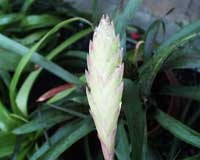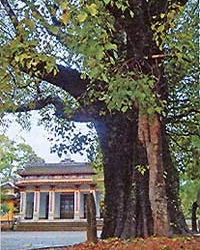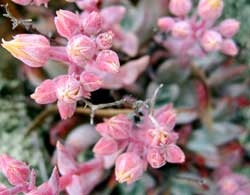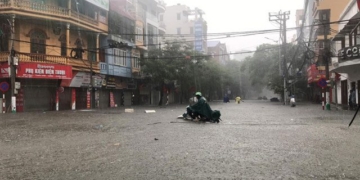While some opinions suggest that wild sunflowers are a strong invasive species, many still love to flock to national parks to “hunt” for them.
Recently, a post about wild sunflowers by Dr. Dang Hoang Giang on social media has stirred up considerable discussion. Specifically, Dr. Dang Hoang Giang stated “wild sunflowers are a highly invasive species in many tropical countries, including Vietnam.” He also cited experts who believe that wild sunflowers are one of the five high-risk invasive species in buffer zones, and one of the two high-risk invasive species within the core area of Ba Vi National Park, the other being Mexican sunflower.

Young people taking photos with wild sunflowers at Ba Vi National Park. (Photo: Phan Nhu).
However, according to some biologists and geographers, the classification of wild sunflowers as a highly invasive species in Vietnam is still a matter of debate.
Origin and Invasiveness of Wild Sunflowers
Wild sunflowers (scientific name: Tithonia diversifolia) originate from Central America. For decades, this exotic plant has thrived in Vietnam. With its bright yellow color and resilient growth, this plant has long been used by locals for ornamental purposes. However, alongside its aesthetic value, wild sunflowers also pose potential ecological and environmental risks.
According to Dr. Vu Anh Tai (a researcher at the Geography Institute, Vietnam Academy of Science and Technology), wild sunflowers are among the plants with high invasiveness, especially in tropical climates. “In areas that are not managed strictly, wild sunflowers can thrive, outcompete native species, and alter the ecological structure,” Dr. Vu Anh Tai commented.
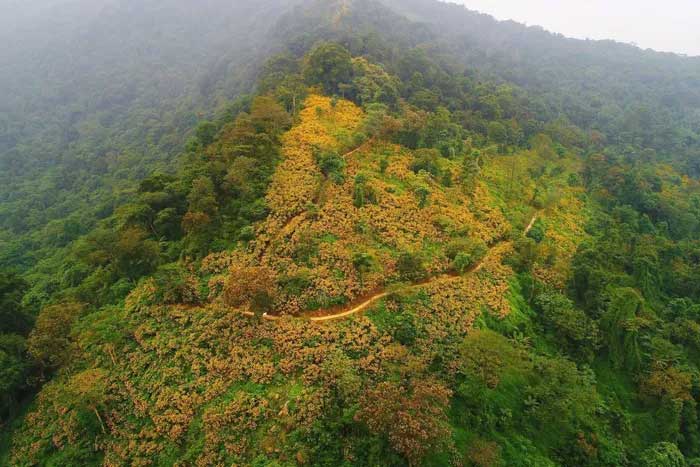
Wild sunflowers blooming in a corner of Ba Vi National Park. (Photo: Nhip Song Hanoi).
Earlier, in June 2022, Dr. Vu Anh Tai and colleagues published a scientific paper entitled Survey and Assessment of Invasive Plant Species at Ba Vi National Park. This paper was also referenced by Dr. Dang Hoang Giang in his post. In this work, Dr. Vu Anh Tai emphasized the danger of wild sunflowers arising from their reproductive ability to spread in vacant lands, along roadsides, or abandoned agricultural areas.
“In Ba Vi, wild sunflowers have invaded many areas, from paths within the National Park to farms outside. If not controlled, this plant can negatively impact agricultural land and natural habitats,” Dr. Vu Anh Tai added. Notably, the essential oils released by the plant can inhibit the germination and growth of other plant species. This creates unfavorable competition for native plants.
To control the invasiveness of wild sunflowers, Dr. Vu Anh Tai suggested effective land management measures, especially in newly planted forest areas and abandoned agricultural land. Researching biological methods, such as using native plant species or microorganisms to control wild sunflowers, should also be prioritized.
No Clear Evidence to Confirm Wild Sunflowers as an Invasive Species
Although wild sunflowers are considered a high-risk invasive species at Ba Vi National Park, Dr. Vu Anh Tai also noted that evidence of the danger of this plant has not been recorded in other regions. This viewpoint is echoed by scientists from the Institute of Ecology and Biological Resources (under the Vietnam Academy of Science and Technology).
Ecologists analyze that wild sunflowers can thrive in areas with suitable climatic and soil conditions, such as dry, cool places with moderate temperatures. This species does not flourish in wetland areas or sensitive ecosystems. Moreover, in forests with large canopies blocking light, wild sunflowers cannot grow. Therefore, they only appear in roadside areas or vacant lands.
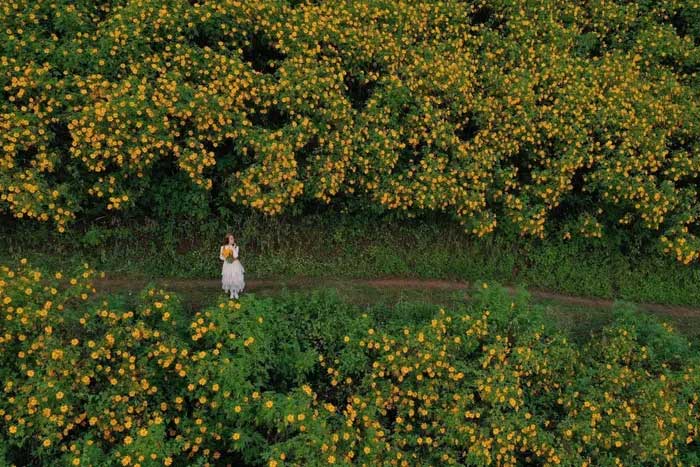
A young person taking a photo with wild sunflowers in Da Lat. (Photo: Hong Tam).
“Surveys of the Ministry of Natural Resources and Environment’s circulars indicate that wild sunflowers are not listed among the invasive alien species in Vietnam,” scientists from the Institute of Ecology and Biological Resources stated. Accordingly, in Annex 1 of Circular 35/2018/TT-BTNMT issued by the Ministry of Natural Resources and Environment, six plant species are listed as invasive, including water hyacinth, Mexican sunflower, cogongrass, common ragweed, Mimosa pigra, and Mai Duong.
Nevertheless, biologists also proposed that localities need to manage the development of this flower species closely to balance tourism benefits and environmental protection. Designating specific areas for planting wild sunflowers not only helps maintain attractive landscapes but also limits the risk of unwanted competition with the native ecosystem. For instance, in Da Lat, wild sunflowers are often planted along roads leading from Lien Khuong Airport, creating a “specialty” that attracts tourists without impacting other land areas.
To ensure sustainable development, thorough research on the environmental impact of wild sunflowers still needs to be conducted. Additionally, management experiences of exotic species from other countries can provide useful lessons for Vietnam. Overall, wild sunflowers are not only a symbol of natural beauty but also a typical example of the harmony between humans and nature when managed appropriately.








































